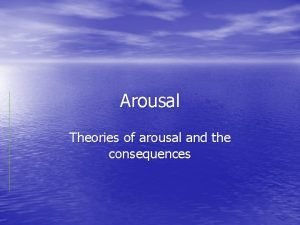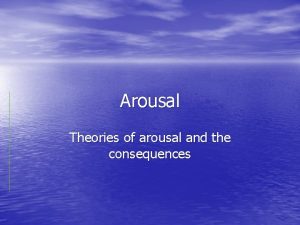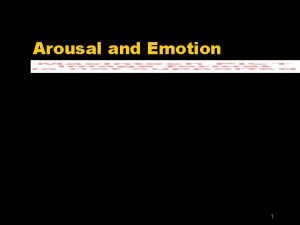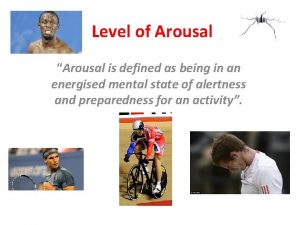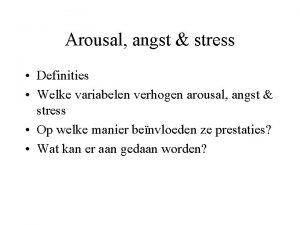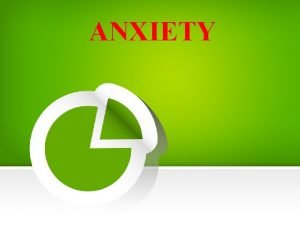AROUSAL l Arousal is the general term for








- Slides: 8

AROUSAL l Arousal is the general term for the intensity dimension of behaviour. l Definition l “ the general state of activation or excitation that ranges on a continuum from deep sleep to extreme excitement” l Somatic l Cognitive

Types of arousal l Physiological /Body / Somatic l Psychological /Mind / Cognitive l Make a list of examples for both types. l Remember that a certain level of arousal is positive but over arousal can lead to a drop in performance so you must think of both positive and negative cognitive examples.

Cognitive effects of arousal l Increased focus and concentration l Heightened awareness of important cues in the environment. l Narrowing of attention-ignoring irrelevant stimuli l Decreased reaction time

Effects of over arousal l Anxiety and apprehension. Cognitive and somatic. l Tension l Negative self talk l Difficulty sleeping / relaxing l Inability to concentrate – attention on irrelevant stimuli l What are the effects of under arousal?

Theories of arousal l l l l Drive theory linked to…. ? (Hull 1943/Spence 1956) P=f (H x D) P=performance H=habit (learned responses/behaviours) D=drive (arousal) f=function As arousal increases, learned behaviour more likely to occur. Limitations? ?

Inverted U theory l Yerkes and dodson (1908) original research l Currently most accepted theory by sports psychologists. l Suggests performance is optimal at moderate arousal levels. l Arousal levels differ for different tasks/skills. (examples of levels/sports)

Attentional narrowing l Performers attention/focus becomes narrowed as arousal increases. Does not mean more focus. Negative/positive effect. l Give examples of this. l Arousal and stages of learning.

Catastrophe theory l Fazey and Hardy (1988) l Catastrophic performance shift when arousal becomes too high. l Due to high levels of cognitive/somatic anxiety. l Give examples of this l RAS









